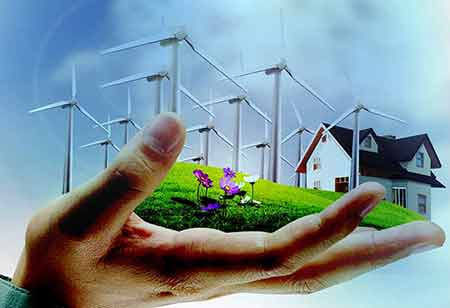Thank you for Subscribing to Energy Business Review Weekly Brief
What Are The Implications Of Iot For Energy Generation, Distribution, And Transmission?
The trends achieved from the sensors can predict infrastructure failure, assist in maintenance,

By
Energy Business Review | Thursday, February 03, 2022
Stay ahead of the industry with exclusive feature stories on the top companies, expert insights and the latest news delivered straight to your inbox. Subscribe today.
Energy production, distribution, and transmission are transforming due to the utilization of IoT. With the upbringing of IoT technologies, a sustainable, efficient, affordable, zero-waste grid with pay-as-you-use can be designed. The article resides on how IoT can improve the distribution and transmission of electricity.
FREMONT, CA: Industries have tried and tested several ways to leverage the Internet of things(IOT) in energy generation to achieve a sustainable and clean means of producing electricity while decreasing the use of fossil fuels. The most usually applied feature of IoT in the industrial sector is connected sensors.
The trends achieved from the sensors can predict infrastructure failure, assist in maintenance, and avoid economic consequences in downtimes. In addition, IoT supports energy decentralization, which has paved the way for the commercialization of Small and Medium Industries and modern business models like "pay as you use" off-grid solar systems lighting homes to privately owned large-scale stations.
Asset Management and Maintenance: All equipment is meant to crack and fail at some point due to factors like overloading or vandalization. IoT can aid solve these issues by remote monitoring with an array of sensor parameters.
The potential of the sensors to discover failures and their sources before it evolves is critical to mitigating downtime and increasing the productivity of the repair and maintenance teams.
Grid Balancing: IoT can effectively convey the real-time information necessary to manage circuit lines' congestion. With IoT, the grid can ensure that the linked generation stations will meet the connection requirements from the transmission frequency to voltage modulation and control, preventing instability.
Grid Contribution: The most important trend of electricity in the past year has been to produce energy at the house level and provide the excess to the energy grid. The surplus energy produced by either solar or windmills in several areas like open fields and rooftops is sold to the grid. IoT is the technology that powers electricity transmission; the real-time data given by the IoT solutions can be utilized to manage, auto-adjust the grid, and establish stability.
Load Forecasting: The sensors at key points in various substations along distribution lines can offer information on power intake at different zones, which can support the utilities make automated and intelligent decisions regarding voltage control, load switching, and network configuration. The trends in the data provided can also be enforced as the foundation for infrastructure upgrades and development.
The applications talked depicts opportunities for entrepreneurs to perform more efficiently in delivering additional value to users. The blend of all the IoT applications will most possibly make a difference in making energy cleaner, greener, and affordable.






